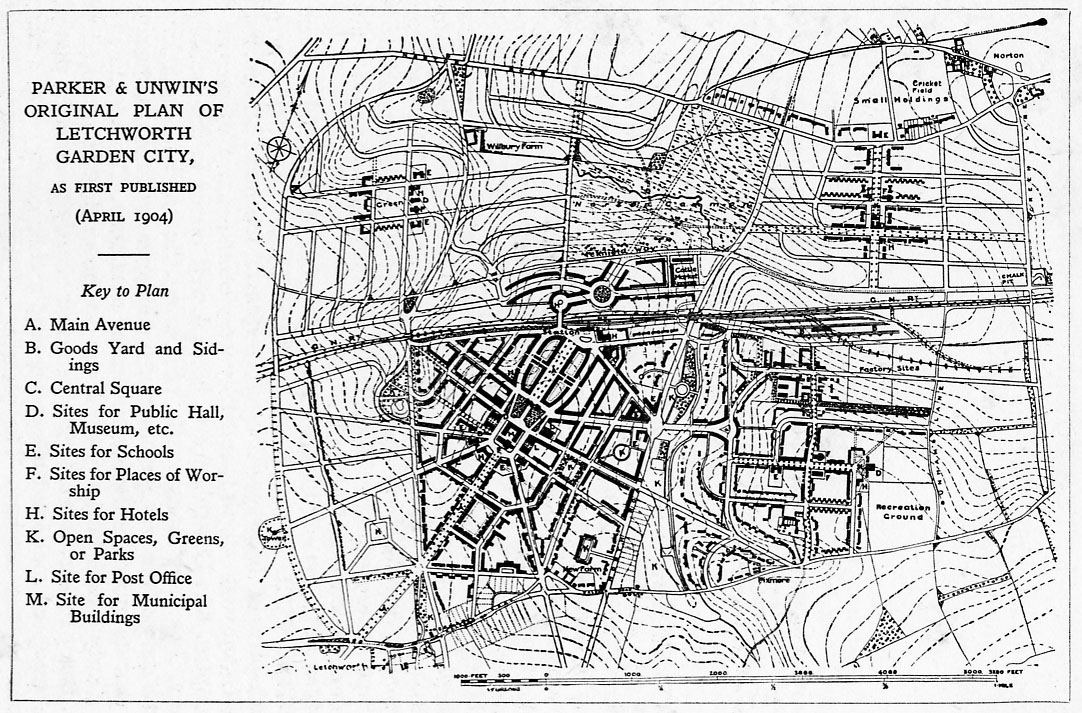L 25 |
Barry Parker, Raymond Unwin – Letchworth Garden City |
type |
|
place |
|
date |
|
architect |
In his book entitled Garden Cities of To-morrow, Ebenezer Howard outlined his vision of garden-city life, blending the positive aspects of rural and urban lifestyles. He worked out in detail a model of this working utopia, the system of occupants’ cooperation and institutions, sustainable economic operation and maintenance, the rules orchestrating the man-made environment, as well as the principle of a meaningful co-existence with nature. In 1899, he founded the Garden Cities Association to spread his views and thus expose them to discussion. Because it generated much interest, the Garden City Pioneers Company was founded to create the very first garden city on an area of 2,300-3,400 acres with efficient railway connections and economically developable public utilities in the catchment area of a city. Thus, Letchworth was chosen, and the site was purchased by 15 private individuals. The winner of the garden city design contest was Raymond Unwin, who successfully combined English vernacular architectural traditions with modern principles of civic design. The town featured radial streets leading to the main square with a grid of streets adapted to the existing natural features of the site. Designers strove to preserve the precious vegetation, and design work was defined by strict regulations including the proposed ratio of development, garden designs, dimensions of rooms, and areas integrated in floor plans, as well as the exterior appearance of the buildings. In 1905, Letchworth hosted the “exhibition of inexpensive housing” on an area designated for this purpose. Houses of various designs and structures were built, ranging from concrete to lightweight technology, which allowed clients to choose designers to their liking later on. Social provision and the presence of industries were at the focus of attention in the garden city. As a result, by 1913, more than 30 industries were active on the site, while the ensemble was inhabited by 9,000 people over the same period of time.









